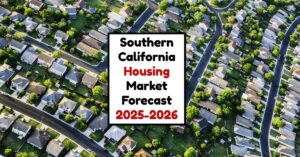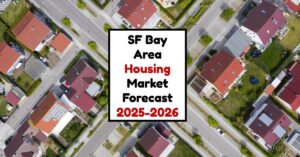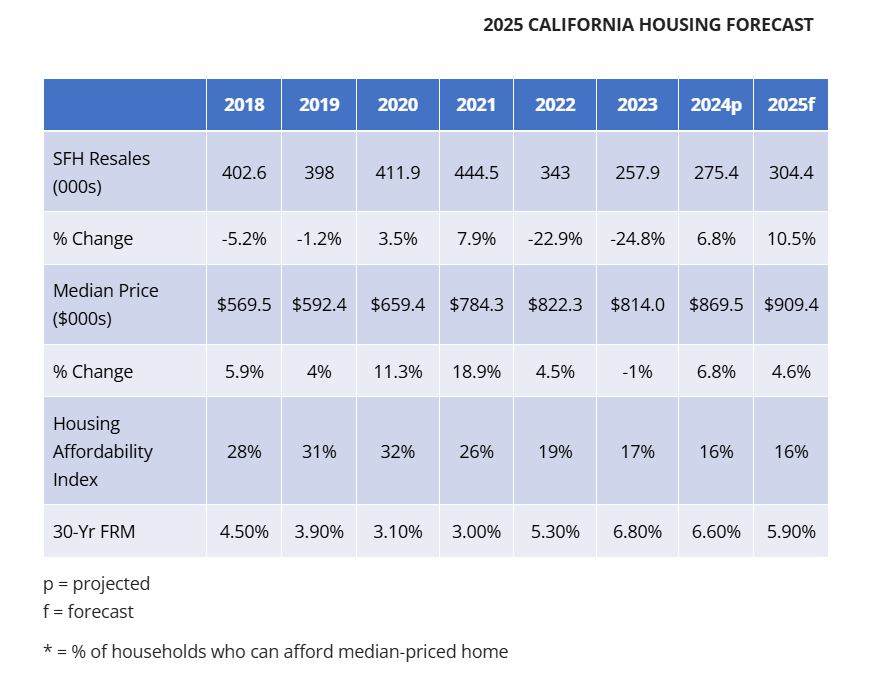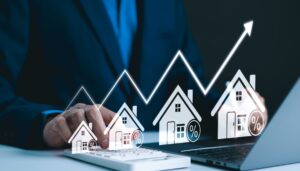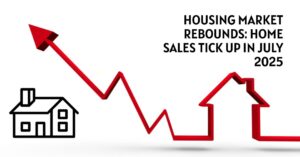Yes, you read that right. The San Francisco Bay Area experienced the largest regional decline in sales in California, with a 4.1 percent drop compared to last year. This news might have you wondering what's happening with the real estate market in one of the most desirable places to live. Let's break down the latest data and what it means for buyers and sellers.
SF Bay Area Housing Market Cools: Sales Plunge, Prices Stay Stagnant
Home Sales
Across California, home sales are down, but the Bay Area is feeling the pinch more than other regions. According to the California Association of Realtors (C.A.R.), existing, single-family home sales in California totaled 261,820 in July 2025, a 4.1% decrease from July 2024. While other regions like Southern California (-1.7%) and the Central Valley (-1.5%) saw declines, the San Francisco Bay Area's 4.1% dip was the most significant.
Here's a quick look at how different regions in California fared in July 2025:
| Region | Sales YTY% Chg |
|---|---|
| Far North | 4.8% |
| Central Coast | 1.7% |
| San Francisco Bay Area | -4.1% |
| Southern California | -1.7% |
| Central Valley | -1.5% |
Within the Bay Area, several counties experienced sales declines: Alameda (-7.4%), Marin (-13.2%) and Santa Clara (-8.7%). However, San Mateo bucked the trend, with a 12.2% increase in sales. Napa and Sonoma counties also saw positive YOY growth.
Home Prices
Are Home Prices Dropping?
While the San Francisco Bay Area’s median home price remained unchanged year-over-year, at $1,300,000, the price actually dipped from June 2025’s median of $1,400,000. This 7.1% decrease month-over-month suggests that the market is cooling off a bit in response to lower demand.
Across California, the median home price in July 2025 was $884,050, which is down 0.3% from July 2024. Prices have been trending slightly downward for the last 3 months. While a small decrease, it's a sign that the previously relentless rise in home prices might be slowing down.
Housing Supply
One factor influencing the market is the increasing housing supply. The Unsold Inventory Index (UII), which measures how long it would take to sell all homes on the market at the current sales rate, was 3.7 months in July 2025, up from 2.9 months in July 2024. This means there are more homes available for sale, giving buyers more options and potentially reducing competition.
Total active listings were up a whopping 37.7% from a year ago, reaching a 69-month high. That said, the pace of growth in total active listings decelerated for the third straight month, hitting its lowest rate in seven months.
In the San Francisco Bay Area, the UII stands at 2.7 months, up from 2.0 months last year.
Is It a Buyer's or Seller's Housing Market?
With increasing inventory and slightly declining prices, the market is starting to shift away from being a strong seller's market. It's not quite a buyer's market yet, but buyers are gaining a bit more leverage. Homes are staying on the market longer, and there's more room for negotiation.
The median number of days it took to sell a California single-family home was 28 days in July, up from 20 days in July 2024. The statewide sales-price-to-list-price ratio was 98.5 percent in July 2025 and 100 percent in July 2024, indicating that homes are more often selling for slightly below the asking price.
Market Trends
Several factors are contributing to these trends:
- High mortgage rates: Although rates have slightly decreased since last year, they are still high enough to deter many potential buyers, especially first-time homebuyers.
- Economic uncertainty: Concerns about the overall economy can make people hesitant to make big financial decisions like buying a home.
- Seasonal slowdown: The summer months often see a slight dip in real estate activity.
Impact of High Mortgage Rates
Currently, U.S. weekly averages as of 08/21/2025, the average 30-year fixed mortgage rate is around 6.58% and 15-Yr FRM is about 5.69%, according to Primary Mortgage Market Survey® by Freddie Mac. This is higher than what we saw in previous years, significantly impacting affordability. Even slight fluctuations in mortgage rates can significantly affect a buyer's monthly payment and overall purchasing power.
According to various forecasts, the 30-year FRM rate will end 2025 between 6.0 to 6.5 percent.
The following table will show you how it affects a buyer.
| Loan Amount | Interest Rate | Monthly Payment (Principal & Interest) |
|---|---|---|
| $800,000 | 6.0% | $4,797.19 |
| $800,000 | 6.58% | $5,066.64 |
| $800,000 | 7.0% | $5,321.17 |
As you can see, a one-percent increase in interest rate can cost you hundreds of dollars a month!
My Thoughts
Having watched the Bay Area real estate market for years, I've seen its incredible resilience. It's a desirable place, and demand will likely bounce back eventually. However, the current situation presents both challenges and opportunities.
For sellers, it's crucial to be realistic about pricing. Overpricing can lead to your home sitting on the market for longer than expected. Work with a knowledgeable real estate agent who understands the local market dynamics to determine the right price. Buyers, on the other hand, have a bit more breathing room. Take your time, explore different neighborhoods, and don't be afraid to negotiate. The combination of increased inventory and slightly lower prices means you might just find the right home at a better price than you would have a year ago.
Don't rush the process! Take advantage of this time to secure good financing by speaking to multiple lenders. The market can shift again, and it is best to be prepared.
Ultimately, real estate is a long-term investment. Whether you're buying or selling, it's important to do your research, understand the market conditions, and make decisions that align with your individual financial goals and circumstances.
Invest in Turnkey Rental Properties
Discover high-quality, ready-to-rent properties designed to deliver consistent returns.
Contact us today to expand your real estate portfolio with confidence.
Contact our investment counselors (No Obligation):
(800) 611-3060
Also Read:
- Bay Area Housing Market Sees a Big Decline in Home Sales
- Bay Area Housing Market: Prices, Trends, Forecast 2025
- Bay Area Housing Market Predictions 2030
- Is the San Francisco Housing Market Heating Up in 2025?
- San Francisco Housing Market Crash 2025: Will it Happen?
- Bay Area Housing Market Soars With Largest Gain in Home Sales
- Bay Area Housing Market Forecast for the Next 2 Years: 2025-2026
- Bay Area Housing Market: What Can You Buy for Half a Million?
- Bay Area Home Prices Skyrocket: Wealthy Buyers Fuel Market
- Bay Area Housing Market Booming! Median Prices Hit Record Highs
- Most Expensive Housing Markets in California
- SF Bay Area Housing Market Records 19% Sales Growth in July 2024
- Bay Area Housing Market Heats Up: Home Prices Soar 11.9%

